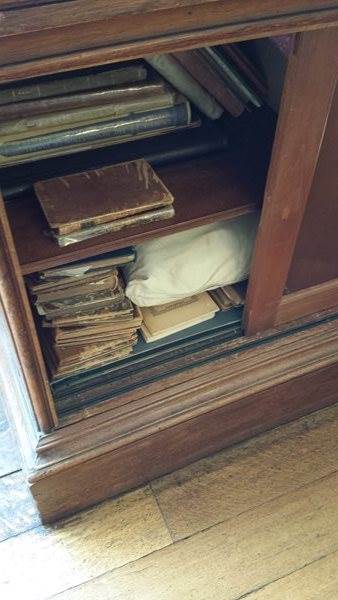Hidden #StoweStories
19 August 2016

Research Intern Blog
I was just filmed! All the interns and volunteers were asked to share our favourite #StoweStories, a question that in reality gave us the opportunity to talk about our favourite things about Stowe, not just stories. But the reason I love Stowe is just that—its stories. Stowe has so many stories! Countless untold and hidden ones. A few weeks ago, while rummaging around the collection of original Seeley guidebooks in the library cupboard, I came across a curious book. A first edition of A Day in Stowe Gardens, published in 1825.
Intrigued and frankly clueless as to what it was—it was too thick to be a guide—I flipped through it (well, carefully thumbed). It was an anthology of stories that did not seem to have anything to do with Stowe, apart from the title and the brief introduction, which chronicled an old bachelor’s social activities while visiting the grounds. The author too was unnamed, apart from a name scribbled in pencil on the title page. Not sure what to do with it in my research at that time, I put the book back and didn’t pick it up again until last week.
I finally read the introduction and recognized a sentence about New Inn that the National Trust souvenir guide had excerpted (yes, I read the guide—it’s research!) and attributed to Mary Sabilla Novello, author as well as wife of the musician Vincent Novello and mother of fellow author, Mary Cowden Clarke (thank you, Wikipedia). Looking more closely, I noticed a dedication to Leigh Hunt, whose name meant nothing to me as a medieval historian (sorry, Mr. Hufnagl—I just about remember Byron from sophomore English lit). Turns out Leigh Hunt was at the centre of literary and artistic talent at the turn of the nineteenth century, giving his name to the Hunt Circle, the group of Romantic artists that included John Keats and the Shelleys among its members. Those names I do know.
Is this book evidence that the Romantics visited Stowe? Did they gather over a picnics and regale each other with fantastical stories, as the narrator and his friends do? I simply don't know, but I'd like to find out. It would appear then that Stowe, even as the Temple-Grenville family was beginning its descent into ruin, still inspired the minds of artists, drawing them onto its grounds or even firing their imaginations from afar.
The story of the house and estate is undoubtedly that of the rise and fall in fortune of the Temple-Grenvilles, as is told throughout the house today, but the undercurrent narratives of the main story of Stowe's creation and the foundation of a political dynasty are no less important for their obscurity. The scraps left behind by those who visited Stowe are like so many tantalizing dots of paint in a pointillist landscape. Together, they create a fuller picture of Stowe, of not just a grand and aloof country estate but very much a locus of activity at the centre of the society, politics, and culture of the long eighteenth century.